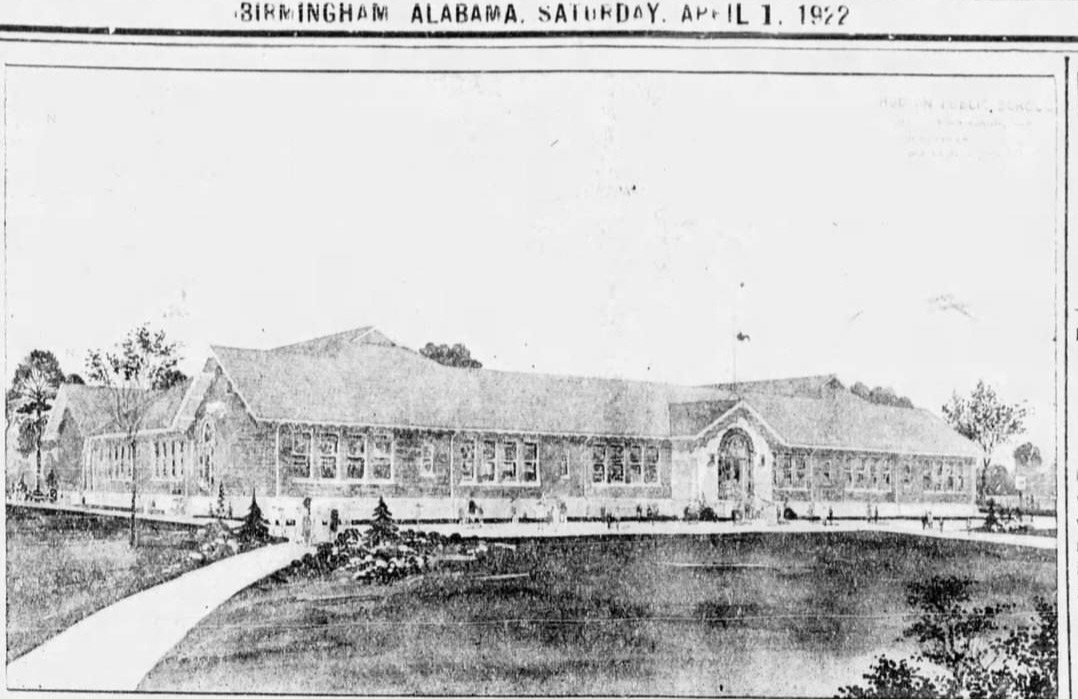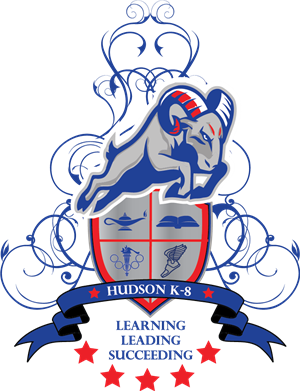About Us
School History

The History of Bertram A. Hudson K-8 School
Student enrollment was at such high levels at North Birmingham Colored School in the 1920s that the city's school board decided to build a new elementary school for children in the Collegeville community. The Birmingham Board of Education would approve the community's recommendation to name the new facility Bertram A. Hudson Negro Elementary School. Bertram A. Hudson dedicated his life to education while serving Birmingham Public Schools as a science teacher; vice-principal and principal before venturing into the banking business.
Mr. Hudson, often referred to as "Bert," graduated from Industrial High School (Parker High) in 1904. He received an BA degree from Talladega College in 1909 and a Master of Arts degree from Fisk University in 1942. The doors of Bertram A. Hudson Negro Elementary School opened in 1922 to accommodate 760 students in the Collegeville community under the leadership of its first principal, Mr. Thomas Jefferson Settles. Mr. Settles graduated in 1917 from Morehouse High School and received his AB degree in 1921 from Morehouse College with a major in history and a minor in science. His annual nine-month salary was $1,250.
Collegeville has always been known as a close knit African-American community that values education for its children. As was the practice during this era, the Caucasian school board administration had little confidence that African-American schools were needed. The community employed an early challenge similar to that of Industrial High School, which was the only high school in Birmingham for African-Americans in the 1920s, to convince the Birmingham Board of Education that education for African-American children should be made available.
The original building was a one-story hollow tile school building situated on a level site of 5.3 acres in a thickly populated, heavy industrial, African-American community. The purchase price for the 5.3 acres was $5,500.00. The contract was awarded to C.W. Hadnott. The total cost of site and improvement was $8,336.86. That price tag also included surveys and appraisals. Hudson was reorganized as a platoon school in September 1929. The platoon system is outlined where one platoon used the academic classrooms, while the second platoon was divided between the shops, nature studies, auditorium, gymnasium and outdoor facilities. At Hudson, all of the school equipment remained in use during the entire school day; this system promoted efficiency in the school operations while developing the intellectual, manual and recreational skills of the children.
The original staff for the new Hudson Elementary was: first grade teachers, Gertie B. Nix, Lovedy B. Hill, Eloise Pulliam, Thomasene A. DuBose and Althea Newsome; second grade teachers, Isabella Miles, Bertha L. Martin, Lucetta Fluker and Edith Irones; third grade teachers, Willie A. Willis, Marvin E. Gordon and Nettie Cummings; fourth grade teachers, Ethel L. Sewell and Maud Jordan; fifth grade teachers, Ella Martin and Fleata L. Hess; sixth grade teacher, Julia R. Hatter; seventh grade teacher, Hattie Alford; shop teacher S.W. Blount, and unassigned teacher, Suzanne Goin. Principal Thomas Jefferson Settles served until 1968. Mr. Settles loved Hudson School and wanted to be near it daily, so he moved his family to 3220 North 32nd St., which was across the street from the school. Hudson Elementary experienced tremendous growth during its first year and continued to expand the staff.
Thirteen more principals would follow Mr. Settles: Edward B. Thompson served, 1968-1969; Ulysses Chatman, 1969-1979; Hosea Turk, 1979-1982; Billy Wayne Davenport, 1982-1983; Erroll Pharris, 1983-1997; Tyrone Smith, 1997-1998; John Thedford, 1998-1999; Hugh Gardner, 1999-2001; Darrell Hudson, 2001-2002; Aurlinda Wilson Hagler, 2002-2003; Wayne Dansby, 2003-2004; Carolyn Denson, 2004-2007, and Jesse Daniel, 2007-2012, and Fred. H. Stewart III who became principal in 2012 and remains in that position today.
After several months of site negotiations, the Birmingham Board of Education approved a plan to build a $14 million new school on March 11, 2008. The new building is nearly double the size of the former school, and there are plans to demolish the old Hudson school site to make way for off-street drive, parking, two outside recreational areas for students and landscaping. The new building features 32 standard classrooms, four special educational classrooms with restroom and shower facilities, one science lecture classroom, science lab with a teacher demonstration table, science room, band classroom with office and storage, choral classroom with an office, storage and tiered seating with stage, business education classroom and lab with office and storage and an art room with a teacher demonstration table and kiln room.
Hudson is the first Birmingham school to feature 21st century classrooms throughout the building. Each classroom has an interactive Promethean board, which takes the place of not only the blackboard but classroom television and other audio-visual equipment. Teachers and students can "write" on the Promethean board with a special stylus. It also can be used to view television broadcasts or videos, and it is tied in with a classroom computer so that it can be used for computer- and Internet-based lessons. In addition, each classroom has three Internet-connected student computers, a computer for the teacher and a printer.
The school also has a media center, a media specialist office, a storytelling reading room that will allow students to enjoy recreational reading, an online media resource station equipped with computers, an adjoining computer lab that will allow an entire class to be on the Internet at once, a work/break room for the library media staff and a storage room for media resources. The 250-seat cafeteria with three lunch waves has an employee locker/restroom area and a commercial kitchen. The administration suite contains two student testing rooms, secretary/receptionist area, two counselor/social worker's offices, a first aid area and a nurse's office, restroom and two student carts separated by a partition, a bookkeeping office, two assistant principal's offices, conference room, principal's office with a private restroom, a vault, a general storage room, a workroom, a break room and faculty restrooms. The 500-seat gymnasium has a regulation-sized basketball and volleyball court, complete with a scoring system. There is also a concession/ticket room to provide refreshments and tickets for the student body, bleachers, locker rooms and restrooms. A raised floor at one end of the gymnasium can be used for presentations.
Hudson K-8 School has a rich educational history, producing successful graduates who have gone on to become lawyers, doctors, politicians, professional sports figures, singers, scientists, entrepreneurs, educators and many, many more professions. At Hudson School, students' thirst for knowledge is quenched with support from a bottomless well supplied by teachers and support staff. The architectural vision for the new Bertram A. Hudson K-8 School was conceived by Charles Williams & Associates, Inc. Argo Building Company served as the general contractor and Volkert & Associates provided program management services. Construction was completed summer 2009, and the new school is located 3300 F. L. Shuttlesworth Drive, North.
